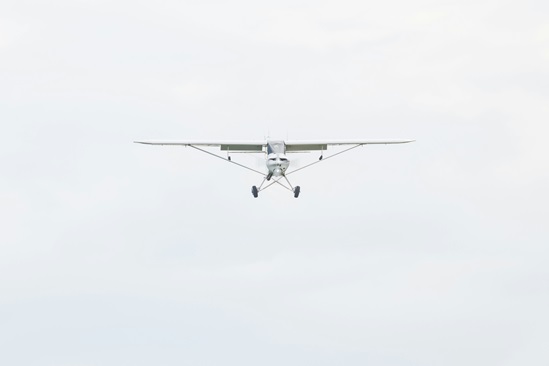Spatial disorientation doomed Carnahan flight
<BR><SPAN class=twodeck>NTSB rules vertigo, failed instrument led to crash</SPAN>
The National Transportation Safety Board has issued its final report on the crash that killed former Missouri governor Mel Carnahan and two others just weeks before the 2000 elections.
Carnahan was aboard a twin-engine Cessna 335 piloted by his son, Randy, an experienced pilot. The board found that after the primary attitude indicator (AI) failed in instrument meteorological conditions (IMC), the younger Carnahan was unable to maintain controlled flight. The report found that the co-pilot's attitude indicator was working at the time of the crash (the AI is an instrument driven by a gyroscope, which provides pitch and bank information to a pilot, and is known colloquially as an artificial horizon). The board concluded that the pilot's attempt to use that AI and the constant turning of his head to cross-check it with his other instruments induced spatial disorientation, causing him to believe his aircraft was doing something it was not.
The NTSB report indicates for the last minute or so before beginning its final descent, the aircraft was in a right turn. During that time, the pilot would have been trying to see the co-pilot's AI to his right, then turning his head to the left to check his own instruments. The board report concludes that the aircraft's turn coupled with the pilot's head motion would induce the Coriolis illusion, causing the pilot's inner ear to register a pitch motion that didn't really exist. The pilot's action to correct the perceived but non-existent change in pitch is believed to have led to loss of control.
The FAA's Aeronautical Information Manual describes the Coriolis illusion as the "most overwhelming of all illusions in flight." Simulators that can allow pilots to safely experience this and other spatial disorientation effects are becoming available. One such simulator, the GAT-II, is manufactured by Environmental Technologies Corporation, which sponsored an AOPA Air Safety Foundation (ASF) spatial disorientation seminar and training at the recent AOPA Fly-In and Open House.
ASF recently cosponsored a study of spatial disorientation and loss of instrumentation. The soon-to-be-published results indicate that loss of an attitude indicator alone is survivable in many cases.
The leading cause of spatial disorientation is continued VFR flight into IMC. For more information on spatial disorientation, see the ASF Safety Advisor at AOPA Online.
02-2-184x


